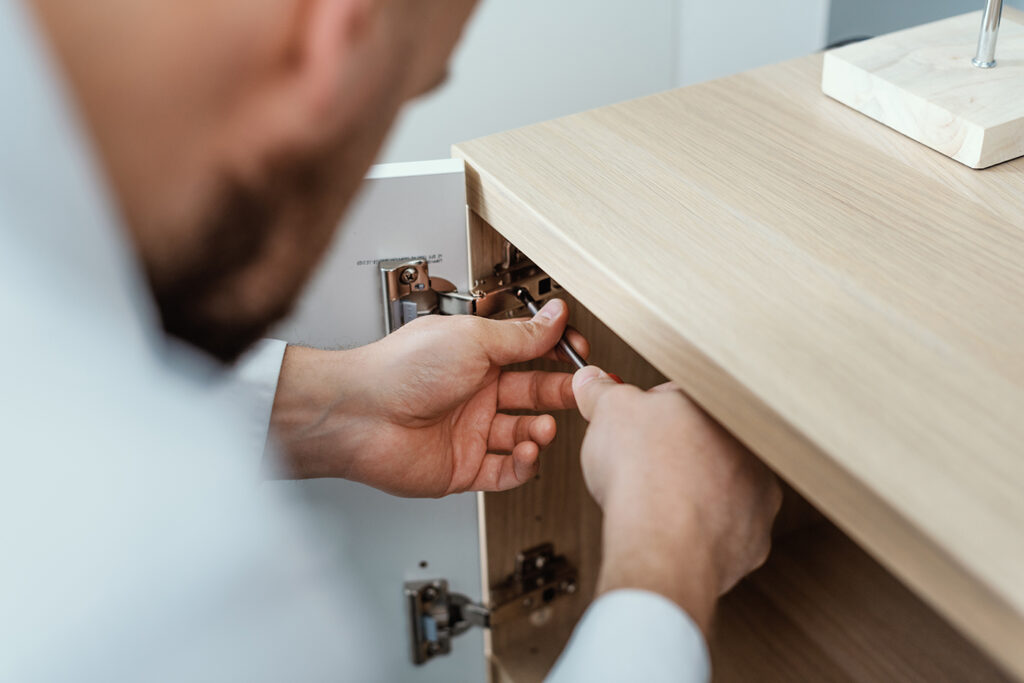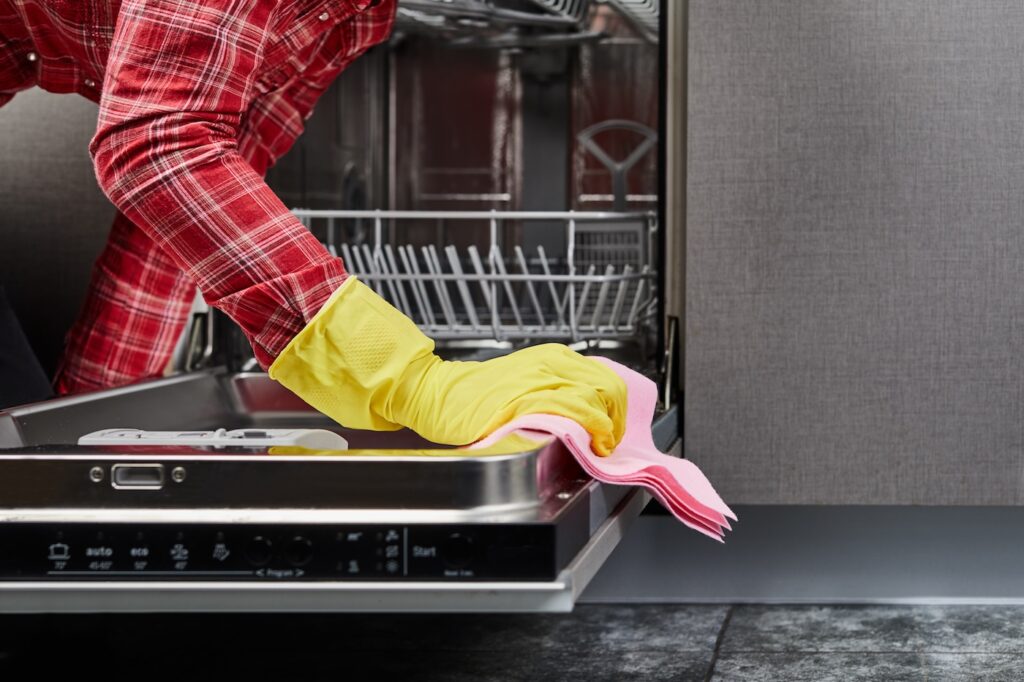Just like any other aspect of your house, cabinets require occasional maintenance. Over time, factors such as gravity can subtly alter the door alignment of your cabinets. The good news is adjusting cabinet hinges is a straightforward task that you can easily tackle. If you’ve noticed your kitchen cabinet doors sitting at awkward angles, restoring them to their proper position is a simple process. Let’s break down all the adjustments you can make to cabinet hinges, step-by-step.
Consider This Before Adjusting Cabinet Hinges
Before diving into the process of adjusting cabinet door hinges, it’s crucial to start with a clear understanding of the issue affecting your door. Identifying the specific problem and knowing which screw on the inside can remedy the situation is the first step in this maintenance journey, and we’ll guide you through it in the following sections. Additionally, it’s essential to close the door after each minor adjustment to assess the progress. Remember, even the slightest tweaks can result in a noticeable difference when fine-tuning your hinges.
Hinge Adjustment: Project Overview
The entire process of cabinet hinge adjustment typically takes just five to 10 minutes, and it requires no more than a $10 investment and beginner-level skills. In fact, you probably already have all the tools you need to get started.
Supplies Needed

Before you begin, check your hinge type. Nowadays, most cabinets feature fully adjustable hinges that can move in three directions: up and down, side to side, and in and out.
Fortunately, the only tool you need for this task is a Phillips-head screwdriver with a #2 screw tip (yes, there are different sizes). It’s crucial to avoid using a drill, as excessive force can lead to stripped screw heads or damage to the cabinet wood.
Materials
- Phillips-head screwdriver
- Hammer
Tools
- Screws
How To Adjust Cabinet Hinges?
Now you’re prepped for the job, follow these steps.
1. Tighten Loose Doors

The most common issue with cabinet doors is sagging. To resolve this, start by opening the cabinet door. You’ll find two mounting screws located on the top and bottom of the hinge attached to the cabinet door. Turn these screws clockwise to secure. If the issue persists after this adjustment, proceed to the next step.
2. Adjust Cabinet Doors Up or Down

Next, locate the two vertical screws on the cabinet box hinge. These screws will allow you to adjust the door vertically. Gently loosen these screws, turning them just a quarter of a turn or less counterclockwise—keeping them slightly tight is better than too loose. With the cabinet door closed, adjust it to your desired angle. Open the door, hand-tighten the screws, and then close the door again to check its new position.
3. Adjust Cabinet Doors Side to Side

When aligning the cabinet door from right to left, locate the side-to-side screw. This is the horizontal screw on the cabinet box hinge closest to the front of the cabinet. If the cabinet door is tilting downward to the right, focus on the top hinge, adjusting the top side-to-side screw. For the bottom of the cabinet door tilting to the right, turn the bottom side-to-side screw to adjust accordingly to the edges of the cabinet.
4. Adjust Cabinet Doors In or Out

Finally, if your door is too close to the cabinet, causing binding issues, you can make adjustments to the cabinet door’s depth. Locate the depth adjustment screw, positioned horizontally on the cabinet box hinge closest to the back of the cabinet. Gently loosen this screw and pull the door towards you, making a minute adjustment of only 0.04 inches. Once adjusted, retighten the screw securely.
Door Hinge Adjustment FAQs

Can I use a power drill to adjust cabinet hinges?
Most modern cabinets come equipped with fully adjustable hinges and can be adjusted using the methods outlined in this guide. However, older or specialty cabinets may have different mechanisms. It is not recommended to use a power drill, as excessive force can lead to stripped screw heads or damage to the cabinet wood. Stick to a Phillips-head screwdriver for precision.
How often should I check and adjust my cabinet hinges?
The frequency depends on usage, but it’s a good idea to inspect and make minor adjustments as needed every few months. Regular checks can prevent more significant issues. Regular maintenance, such as checking for loose screws and ensuring hinges are in good condition, can help prevent future issues. Be mindful of heavy loads and avoid slamming doors.
What if my cabinet doors still don’t close properly after adjusting the hinges?
If issues persist, you may need to examine the cabinet structure, check for warping, or consult with a professional for a more in-depth assessment. In most cases, you can make necessary adjustments with the cabinet doors in place. Removing the doors may be required for more extensive repairs or replacements.
What sort of work can a Tasker help with?
Taskers are skilled with all types of projects, whether it be a remodel or woodworking. Although many projects involved with cabinetry are very DIY, Taskers can lend a hand for any and all types of cabinets including kitchen cabinet hinges, concealed hinges, soft close hinges, cabinet hardware, cabinet knobs, and even the bathroom cabinet.
Adjust Cabinet Hinges With a Tasker’s Help
When faced with the challenge of loose cabinet doors, the solution is as simple as tightening the hinges, as outlined in this guide. Kitchen cabinetry serves as the focal point in any kitchen. Once installed, they provide a canvas for additional enhancements like lighting, painting, and more. Undoubtedly, the initial investment in cabinets for a home improvement project is significant, and the thought of further customization, such as painting, may seem daunting. Nevertheless, if you find yourself needing more assistance for all your kitchen cabinet or mounting needs, consider trusting the job to a skilled Tasker. Their expertise will guarantee that your cabinets, the heart of your kitchen, remain both functional and aesthetically pleasing. Find the qualified help you need today!














